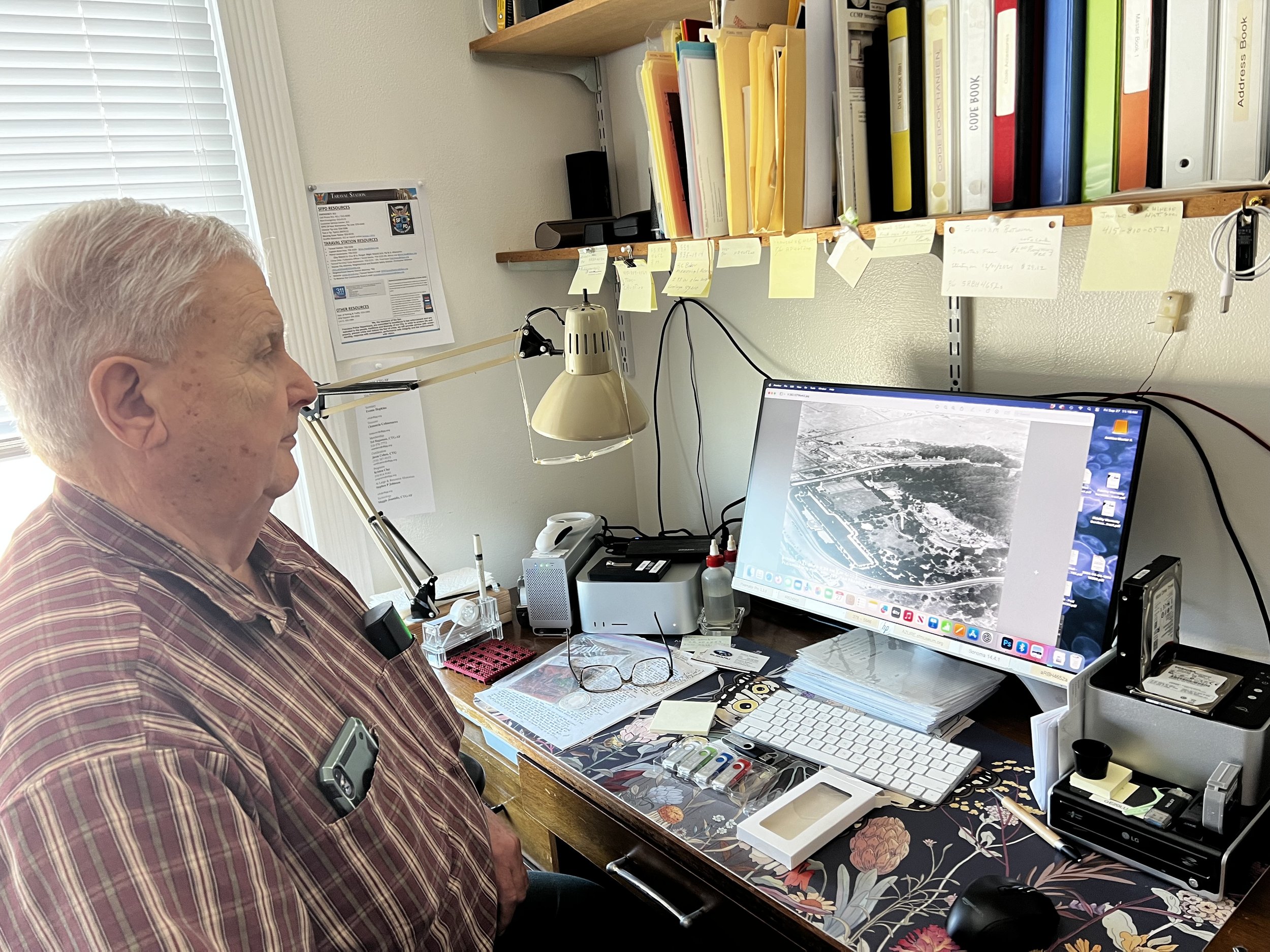A Treasure Chest of Hidden San Francisco History In a Family Home
Richard Hansen runs sfmuseum.org from his home, which is filled with thousands of San Francisco artifacts.
Richard Hansen’s house on Sloat Boulevard near Lakeshore Plaza doubles as a veritable museum of San Francisco history. Three rooms are dedicated to the photos, maps, and records dating back to the Gold Rush with special attention to the victims of the 1906 earthquake and fire.
Richard also runs an online museum through a multimedia website called sfmuseum.org, which showcases hundreds of historic photos, news articles, and documents.
Beyond being a storage place for San Francisco’s history, the home is where Richard lived his personal history for more than 60 years. He grew up in the home, married, and raised two sons there with his wife Karen Tang.
Richard’s passion for discovering and preserving San Francisco’s past was sparked by the work of his late mother, Gladys Hansen, a librarian and self-made historian. Their groundbreaking work uncovered nearly 3,000 additional victims of this devastating disaster that profoundly shocked and transformed the city.
Uncovering hidden history
The treasure chest of historic artifacts in Sloat Boulevard was started by Richard’s mother, Gladys. Her passion for history began during her tenure as a librarian at the San Francisco Public Library, where she was responsible for the collection of California books and artifacts.
In the 1960s, Gladys embarked on an ambitious project to accurately document the damage and casualties of the 1906 Earthquake and fire. She firmly believed that the death toll had been dramatically understated. She combed through letters, diaries, family histories, and photographs to verify the actual death toll block by block. What began as her personal mission became a 60-year project that Richard enthusiastically participated in and continued after his mother's death in 2017.
Their ground-breaking research ultimately compelled the City of San Francisco to abandon its original tally of 478 deaths. The currently accepted figure now stands well over 3,400.
"Our research has changed the story of 1906," he notes. "It had an impact not just on history books but on engineering and seismology studies."
In recognition of their extraordinary work, Gladys and Richard were appointed as associates in seismology at the California Academy of Science in 1987. They also co-authored the book "Earthquake, Fire and Epidemic: San Francisco's Great 1906 Disaster" along with renowned surgeon F. William Blaisdell, MD, who was also a researcher and historian.
Over time, Gladys became a widely recognized authority, author, and speaker on local history. Another significant project that mother and son collaborated on was establishing the San Francisco City Guides in 1978. It became a model for similar programs across the country. Today, when people enjoy free city walking tours, they are experiencing a direct result of Richard and his mother's pioneering work.
San Francisco’s Sunset district in the early 1900s when it was entirely sand dunes.
The homepage of Richard’s museum website features a video on the history of Ocean Beach, which Richard has expanded for in-person presentations. He is also producing a series of programs based on historic tours from 1860 to 1940.
Biologist, fire photographer and city historian
Richard’s professional journey was equally diverse. Initially, he wasn't focused on historical collection. His first career was as an aquatic biologist and photographer at Steinhart Aquarium, where his work involved collecting insects and reptiles. His photographic skills led him to a decade-long position as a photographer for the San Francisco Fire Department.
"I could capture dramatic photos inside burning buildings because I had cameras that could withstand high humidity and dripping water," he recalls.
Additionally, he taught classes in photography, earthquake rescue, and venomous reptiles and insects at the oldest and largest search and rescue school on the west coast.
It was during his fire department years that he met and married his colleague, Karen Tang.
Extraordinary finds
Richard’s passion for collecting never waned. In his spare time, Rich would explore antique shows and flea markets with a fellow amateur historian. These “treasure hunting” expeditions resulted in an impressive trove of old photographs and San Francisco memorabilia.
Some of his most extraordinary finds include glass negatives of Folsom Prison from 1880-1910, which he printed and exhibited at the Crocker Art Museum in Sacramento. Then-governor Ronald Reagan was so impressed that he purchased four prints to donate to the prison. Richard later complemented this donation by giving the original negatives to the institution.
Another remarkable discovery was a collection of glass plate negatives by the pioneering 19th-century British photographer Eadweard Muybridge. These are now part of the Muybridge Collection at Stanford University, thanks to Hansen's generous donation.
Over the years, Richard has displayed his photos in galleries and presented slide shows on city history, the fire department, and astronomy to civic and educational groups.
"Whenever I did a slide show, people would respond by donating their own photos!" he says, suggesting that his collection will perpetually evolve.
His collection has expanded beyond his home's three bedrooms. Richard founded sfmuseum.org, a multimedia site showcasing hundreds of historic photos, news articles, and documents from the Gold Rush era to contemporary events. Many of these photos illustrate "Quotable San Francisco," a book he published with historian Terry Hamburg. The website also hosts the comprehensive register of those who perished in the 1906 disaster.
Richard and Gladys Hansen’s lives have been a tapestry of diverse chapters — a fitting narrative for being San Francisco's premier collectors of history. This family has devoted their lives to preserving the city's heritage, giving voices to the voiceless, and creating a lasting legacy that bridges past and present.
Reported and written by volunteer community journalist Jan Cook. We encourage residents with journalism experience, retired journalists, and student journalists in high school and college to volunteer as writers for Supervisor Engardio’s newsletter. Interested? Apply here. Do you know a story you would like to see featured in the newsletter? Tell us about it here.


